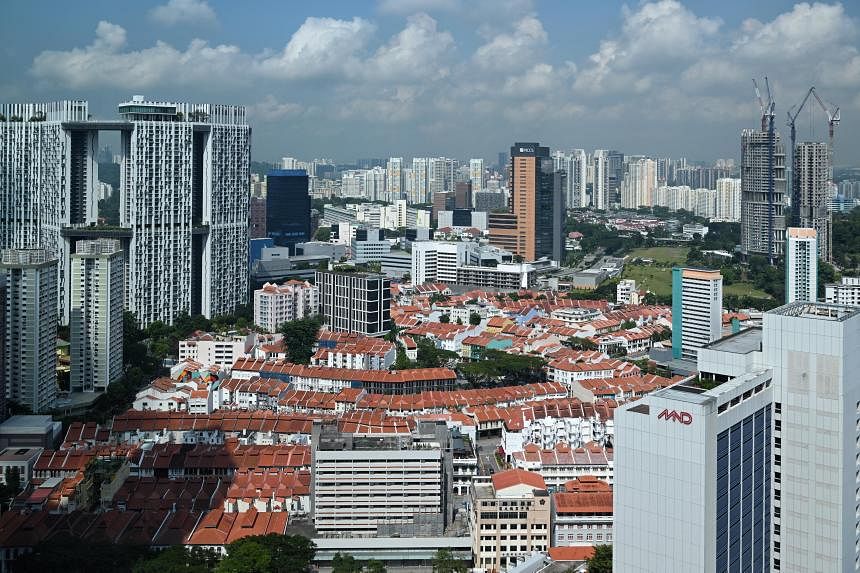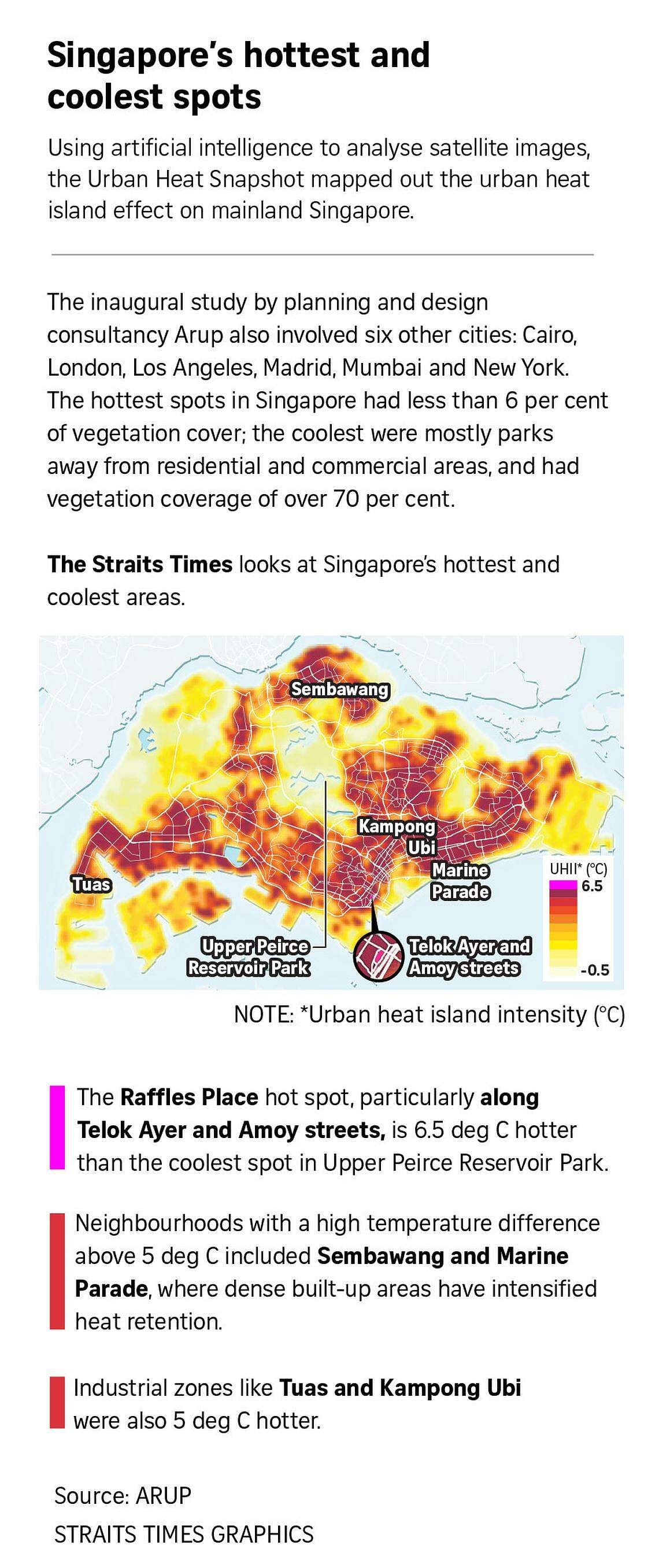by Ganesh Sahathevan
Singapore Strait Times has
reported today that Singapore has an Urban Heat Island problem. The ST story quotes recent research from 2022 to prove the pont (see below)
However , the Building
And Construction Authority produced research which came to broadly the same conclusions
in 2004 . Ten years earlier in
1994 GIS specialist and geographer Dr Janet Nicol was commissioned by the
Government Of Singapore to conduct similar research and produced in general terms
work with similar conclusions. The solutions
proposed by both studies, in essence, involved
planting more trees, but that does not seem to have happened,
As this writer noted in 2011, Singapore will get hotter and hotter as the population grows .
END
From the Strait Times , 29 December 2023
Telok Ayer among hottest spots in S’pore: Urban heat study

SINGAPORE - Raffles Place, particularly the shophouses along Telok Ayer and Amoy streets, is one of the hottest spots in the island state compared with its rural surroundings, according to a study on how built-up areas can retain heat.
At 33.5 deg C, the Raffles Place area was 6.5 deg C hotter than the coolest spot identified, Upper Peirce Reservoir Park. The difference in temperature between the urban environment and its rural surrounding is known as the urban heat island effect.
This finding in Urban Heat Snapshot by global sustainable development consultancy Arup was recorded at midnight on May 13 – 2022’s hottest day. The study mapped the whole of Singapore, with a particular focus on a 150 sq km snapshot of Singapore’s urban centre, using Arup’s digital heat analytics tool UHeat.
In the day, buildings, pavements and other impermeable surfaces in urban environments absorb and hold sunlight and heat energy from people and activities.
At night, this heat is trapped nearer to the ground level because the built-up environment blocks heat from rising into the sky, intensifying the urban heat island effect.
The snapshot uses a tool developed by Arup using artificial intelligence to analyse satellite images based on different factors, including the number of water bodies and green spots, building density, and the ability of surfaces to reflect heat from the sun.
To demonstrate how structures in urbanised spaces can turn up the heat, the rural surroundings of Upper Peirce Reservoir Park, with its water bodies and vegetation, were cited by the study as being heat absorbers. This is because 88 per cent of the park is water and 12 per cent is vegetation.
In comparison, the study found that sunlight can heat up the dark terracotta roofs topping the shophouses of Telok Ayer and Amoy streets to very high temperatures.
While the shophouses have been around since the 19th century, the area may not have been as hot in the past, deduced Arup’s associate principal of cities and planning Tony Chan, due to the cooling effect from the nearby coast. This area was right next to the sea until the 1880s, when land reclamation began.
Telok Ayer and Amoy streets, where national monuments like the Thian Hock Keng temple, Nagore Dargah shrine and Al-Abrar Mosque are located, was pushed farther inland after Cecil Street, Robinson Road and Shenton Way were subsequently built on the reclaimed land.
Since then, high-rise buildings have sprung up in Raffles Place, Shenton Way and Lau Pa Sat, making it difficult for heat to dissipate.
Mr Chan said: “Additional reclamation and the higher density of buildings have blocked coastal winds from dispelling heat from Telok Ayer and Amoy streets.”
Apart from concrete and glass in buildings retaining heat, hot air expelled by air-conditioners during the cooling process and vehicle exhaust are also heat contributors.
Air-conditioning can create another hot and sticky situation.
Mr Chan explained: “We all have a tendency to retreat to air-conditioned environments when temperatures rise. From a sustainability perspective, this is far from ideal given the reliance on energy and the inequality of this approach as not all citizens have the luxury of working indoors.”
Heat mitigation strategies can help, he suggested. Measures can include greening building facades and roofs, or using white paint to change the reflectiveness of surfaces and reduce the amount of heat absorbed.
While vegetation can lower surface and air temperatures through evaporation and transpiration that takes place in plants, it “comes at the cost of increasing humidity”, which may negate the cooling effect from plants, given Singapore’s tropical climate, observed Mr Chan.
Ideal plants would be trees with low transpiration that are able to survive in the tropical environment, he said, adding that “emphasis should be made on planting trees which provide additional shading benefits over shrubbery and short plants”.
But humidity may not be an issue, said Dr Shawn Lum, a lecturer from Nanyang Technological University’s Asian School of the Environment, noting: “The heat-blunting work that plants do will offset heating effects from the humidity they add.”
He added: “Plants and trees won’t solve the vexing problem of a warming climate, but they can be an important part of the solution in a few key ways.”
With increasing global warming, trees will become more important, said Dr Lum, adding that studies have shown that trees are able to reduce temperatures by up to 3 deg C.
“This may not seem like much, but can be the difference between being able to tolerate ambient temperatures to potentially dangerous overheating,” he said.

No comments:
Post a Comment